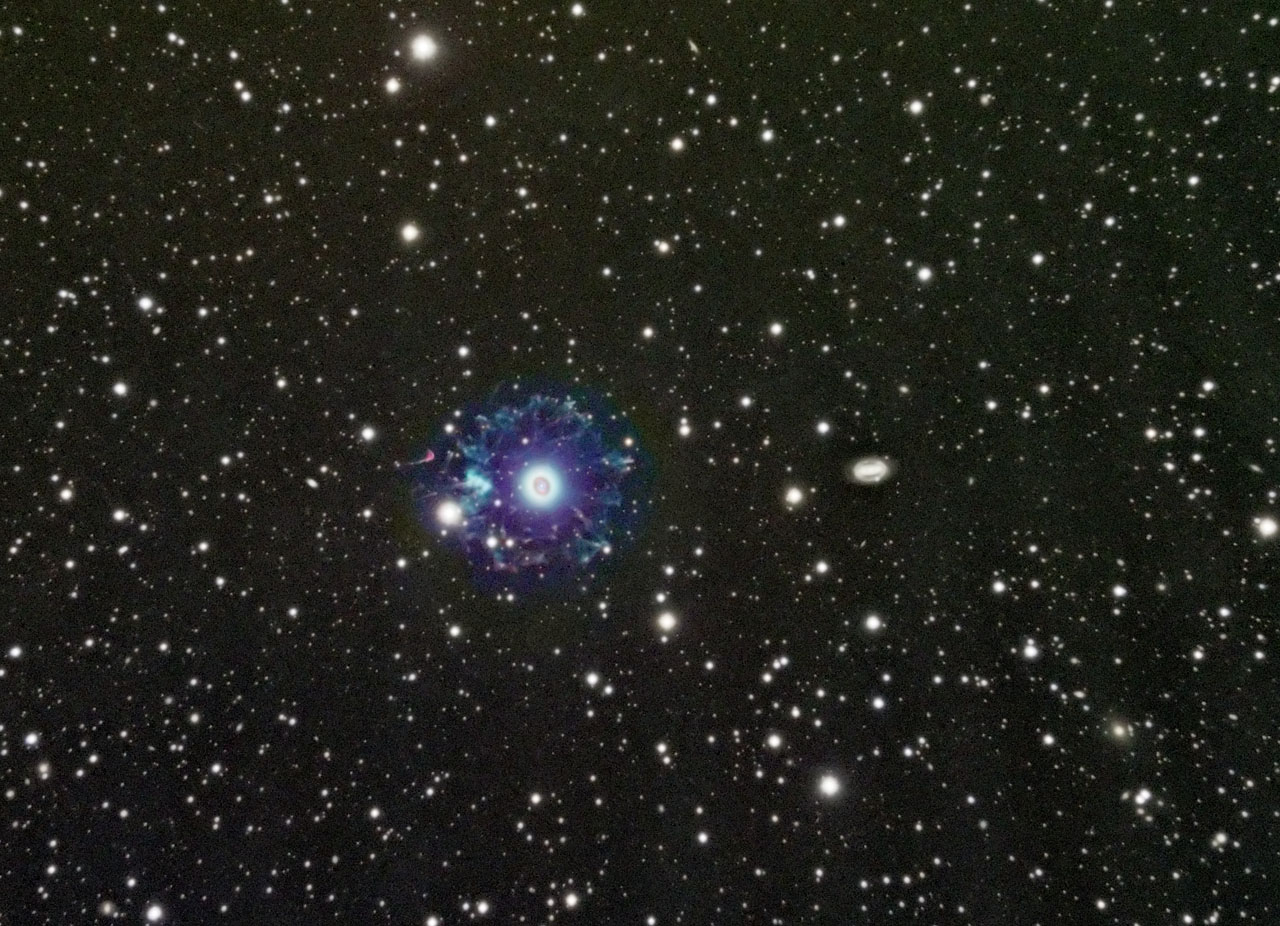In addition to the wide-angle shot of the Milky Way (previous post), I thought I had captured 3 targets at the Maupin star party last weekend. I can usually tell from an individual raw image whether I’ve got what I want, but when the object is exceptionally dim you sometimes have to just trust that it will show up when you stack multiple exposures. Unfortunately, stacking doesn’t help if you don’t have the telescope pointed in the right direction! I had planned to photograph the “Angel Nebula”, but when I googled that to get the coordinates I instead got the coordinates for the “Snow Angel Nebula”. They are both interesting objects, but the latter is very small, while the former is quite large, so I was using entirely the wrong equipment for it. This is what happens when you don’t get enough sleep and do all of your work in the dark.
But I did get a couple of other targets. First is the Cat’s Eye Nebula (NGC6543), which gets its name from the shape of the bright portion in the center, which is usually all you see of this popular object (see a Hubble image here: http://apod.nasa.gov/apod/ap141109.html). But recently, my buddy, Josh Smith, had his image of the Cat’s Eye selected for NASA’s APOD (see http://apod.nasa.gov/apod/ap160528.html), a great honor for any astro-photographer. Although the actual “eye” is a very small part of the image, the surrounding structure is quite interesting – and seldom seen. Since it takes far too much magnification to get a good shot of the eye, I decided to try Josh’s approach:
The blue and red nebulosity around the eye is extremely faint, requiring 30 minute exposures even in luminance (all visible colors), which is far longer than I typically use for “normal color” images (as opposed to narrowband images, where 30 minute sub-exposures are common). It also required a separate set of much shorter exposures (just 1 minute!) for the eye. The 2 portions are blended together to show some detail in each, but in reality the eye is so much brighter that you can’t really see both parts at once.
The Cat’s Eye image was captured at 1500mm focal length (Celestron 8″ EdgeHD telescope with 0.7X reducer) and the same ‘scope was used for the second target, the Whale Galaxy (NGC4631):
I don’t use this ‘scope very often because the atmospheric turbulence in this area is usually so high that I can’t use this much magnification. But the sky was very stable at Maupin, so I thought I’d try it. It worked pretty well for the Cat’s Eye, but I made the mistake of waiting to long to start on the Whale, and it was rapidly approaching the western horizon. This is significant because the closer you get to the horizon, the more atmosphere you are looking through. So the Whale is not as sharp as it could have been.
It also would have been smart to switch to a telescope with shorter focal length for this image because then I could have included another galaxy, the nearby “Crowbar”, in the same shot. Next time!

